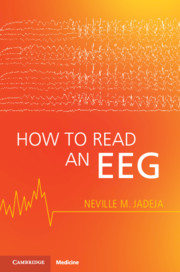Book contents
- How to Read an EEG
- How to Read an EEG
- Copyright page
- Dedication
- Contents
- Figure Contributions
- Foreword
- Preface
- How to Read This Book
- Part I Basics
- Part II Interpretation
- Part III Specific Conditions
- Chapter 18 Common Seizure Mimics
- Chapter 19 Seizures
- Chapter 20 Epilepsies
- Chapter 21 Epilepsy Syndromes
- Chapter 22 Focal Dysfunction (Lesions)
- Chapter 23 Global Dysfunction (Encephalopathy)
- Chapter 24 Status Epilepticus
- Chapter 25 Post Cardiac Arrest
- Chapter 26 Brain Death
- Appendix How to Write a Report
- Index
- References
Chapter 21 - Epilepsy Syndromes
from Part III - Specific Conditions
Published online by Cambridge University Press: 24 June 2021
- How to Read an EEG
- How to Read an EEG
- Copyright page
- Dedication
- Contents
- Figure Contributions
- Foreword
- Preface
- How to Read This Book
- Part I Basics
- Part II Interpretation
- Part III Specific Conditions
- Chapter 18 Common Seizure Mimics
- Chapter 19 Seizures
- Chapter 20 Epilepsies
- Chapter 21 Epilepsy Syndromes
- Chapter 22 Focal Dysfunction (Lesions)
- Chapter 23 Global Dysfunction (Encephalopathy)
- Chapter 24 Status Epilepticus
- Chapter 25 Post Cardiac Arrest
- Chapter 26 Brain Death
- Appendix How to Write a Report
- Index
- References
Summary
Epilepsy syndromes (electroclinical syndromes) are well-recognized groupings of clinical (seizure types) and EEG features that occur together. Each syndrome typically shares a common age of onset, deficits (intellectual dysfunction), treatment, and prognosis. Syndromes are classified based on their onset, epilepsy type (focal, generalized, or mixed), and development of epileptic encephalopathy (disorder in which epileptic activity contributes to severe impairments in cognition and behavior). Relatively benign syndromes are typically associated with focal, generalized tonic clonic (GTC), typical absences, and myoclonic seizures. Epileptic encephalopathies are typically associated with atonic, tonic, atypical absences, and epileptic spasms in addition to the preceding seizure types.
- Type
- Chapter
- Information
- How to Read an EEG , pp. 195 - 213Publisher: Cambridge University PressPrint publication year: 2021

